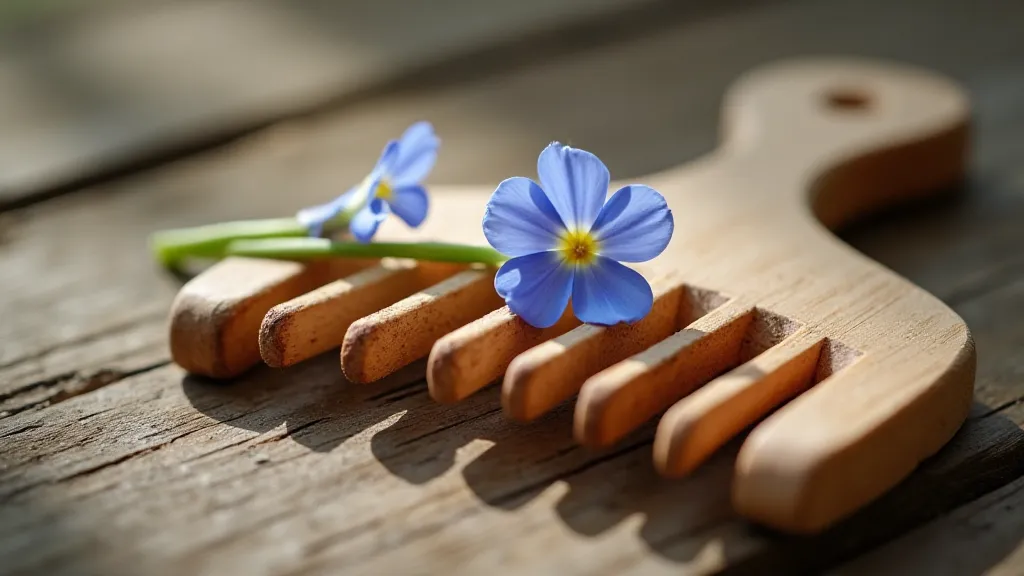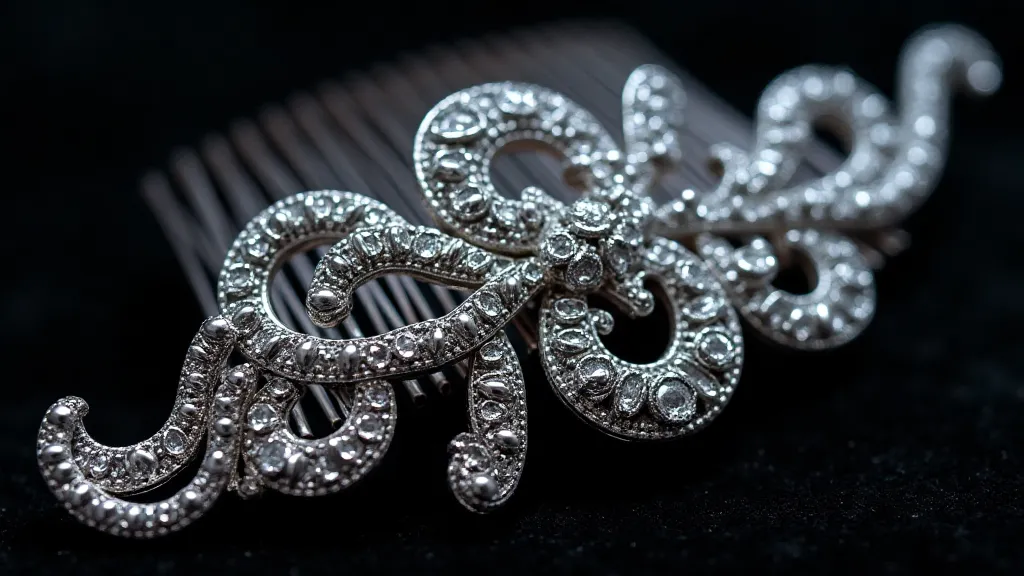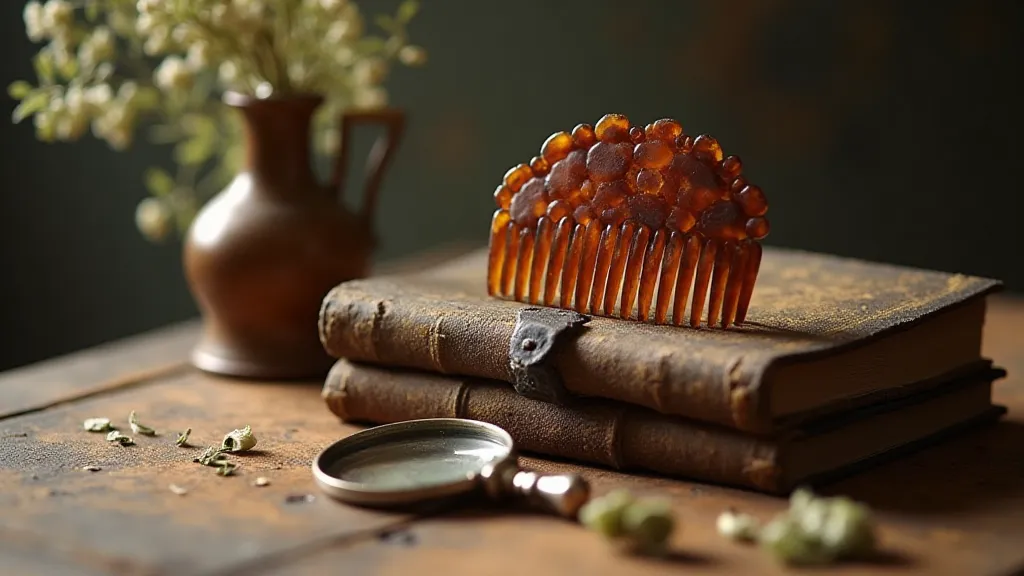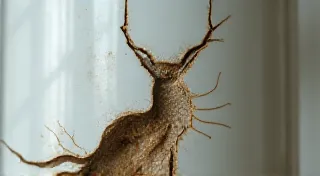The Gilded Cage: Social Class and the Display of Status Through Hair Combs
There's a quiet intimacy in holding a vintage hair comb. The coolness of the material against your palm, the intricate detailing reflecting the light – it's a direct connection to a past life, a moment in time when personal adornment was an art form, and a statement far louder than words. But these weren't just beautiful objects; they were potent symbols, tiny prisms refracting the societal hierarchy of their era. They whisper tales of elegance, aspiration, and the subtle language of class.
My own fascination began with a simple find at a local antique shop. It wasn't a particularly spectacular piece – a tortoiseshell comb, slightly worn, but with a delicate carving of forget-me-nots. Yet, handling it felt like grasping a secret. I started researching, delving into the world of vintage hair combs, and discovered that the story behind each piece is often as compelling as its beauty. They’re not just accessories; they're historical artifacts, miniature biographies etched in bone, metal, and precious stones.
The Early Days: Practicality and the Rise of Ornamentation
Before the Victorian era, hair combs served a purely practical purpose – keeping long hair neatly contained. Early combs were often simple, made from materials readily available: wood, bone, ivory, and horn. These were the tools of the working class, everyday objects used for a functional need. However, as trade routes expanded and new materials became accessible, the potential for ornamentation began to emerge. The burgeoning middle class, eager to distinguish themselves from the aristocracy, started to incorporate subtle details – a simple floral carving, a shell design, or a contrasting material like horn and wood.

The Victorian Era: The Reign of Elaborate Display
The Victorian era (1837-1901) marked a pivotal shift. Hair became a canvas for elaborate styling, and hair combs ascended to the status of essential status symbols. Queen Victoria's influence on fashion and social customs was immense, and the emphasis on mourning, modesty, and, paradoxically, ostentatious displays of wealth fuelled the demand for increasingly intricate and expensive hair combs. The desire to understand these silent signals, these subtle declarations of fortune, became a captivating pursuit.
For the upper classes, combs were crafted from the finest materials: silver, gold, diamond, pearl, and elaborate combinations thereof. Tortoiseshell, once considered a common material, became prized for its beauty and rarity. Elaborate filigree work, intricate enamel painting, and the incorporation of precious gemstones were hallmarks of the aristocracy’s combs. These weren’t mere accessories; they were miniature works of art, demonstrating the owner’s wealth, taste, and position in society. Think of a grand ball – the flash of a diamond-encrusted comb catching the candlelight, a silent declaration of lineage and fortune. The very materials used spoke volumes about the wearer’s standing, a topic explored in more detail in “Beyond the Surface: Identifying and Appraising Rare Antique Comb Materials”.
The middle class, striving for upward mobility, sought to emulate the aristocracy, but often had to compromise. They might opt for silver combs with less extravagant detailing, or tortoiseshell combs inlaid with less valuable materials. A beautifully carved tortoiseshell comb, while not as dazzling as a diamond-encrusted piece, could still convey a sense of refinement and respectability.
Materials and Their Meaning: A Silent Language
The materials used in a vintage hair comb spoke volumes about the owner's social standing. Let’s unpack that a bit:
Beyond the materials, the craftsmanship also signaled social standing. Mass-produced combs, while becoming more common in the later Victorian era, lacked the artistry and detail of hand-crafted pieces. The intricate filigree work of a silver comb, the precise carving of a tortoiseshell piece, the flawless setting of gemstones – these were indicators of the artisan’s skill and the owner’s ability to afford such labor. Look closely at the teeth of an antique comb – the uniformity, the subtle curves, the sheer precision of their construction – these details betray the dedication of the maker. The styles and fashions of the time are also reflected in these details, offering a unique glimpse into family history, as discussed further in “The Comb as Constellation: Mapping Family Histories Through Heirloom Pieces.”

Beyond the Victorian Era: The Early 20th Century
The Edwardian and Art Deco periods saw shifts in design and materials. Edwardian combs embraced lighter, more airy styles, often using delicate silver filigree and incorporating pearls and gemstones. Art Deco combs, influenced by modernism, featured geometric patterns, bolder designs, and a greater emphasis on symmetry. While the social signaling remained, the aesthetic shifted to reflect the changing times. The focus was less on overt displays of wealth and more on a refined, stylish sophistication. The evolving designs often mirrored the broader fashion trends of the era, further cementing the comb's role as a key indicator of social standing.
The Evolution of Styles: From Rustic Simplicity to Art Deco Glamour
Tracing the evolution of hair comb design provides a fascinating visual timeline of societal changes. The early days saw primarily functional pieces, reflecting a practical, working-class aesthetic. As wealth increased and trade expanded, the introduction of new materials and techniques allowed for greater ornamentation. The Victorian era witnessed an explosion of creativity, driven by the desire to display status and emulate the aristocracy. The Edwardian period brought a softer, more delicate style, while the Art Deco era embraced modernity and geometric forms. Examining these trends reveals not only the changing tastes of the time but also the enduring power of personal adornment as a means of social communication.
Collecting Vintage Hair Combs: A Window into the Past
Collecting vintage hair combs is more than just acquiring beautiful objects; it's about holding fragments of history in your hands. It’s about understanding the unspoken language of class, the artistry of the past, and the enduring power of personal adornment. When examining a comb, consider not just its beauty, but also its story. Where did it come from? Who might have worn it? What role did it play in their life?
Restoration, if necessary, should be approached with caution. Cleaning should be gentle, using appropriate materials to avoid damage. Originality is key – preserving the patina of age adds to the comb’s character and historical significance. Focus on preservation, not pristine perfection.

The gilded cage of Victorian society might seem distant and somewhat alien, but the elegance and artistry captured within these tiny objects offer a tangible link to a fascinating chapter in history. Each comb tells a story, waiting to be rediscovered and appreciated. The subtle cues embedded within these objects continue to resonate today, allowing us to connect with the past in a uniquely personal way.





